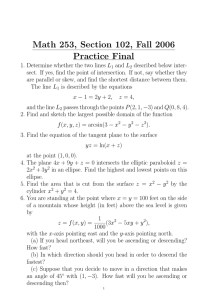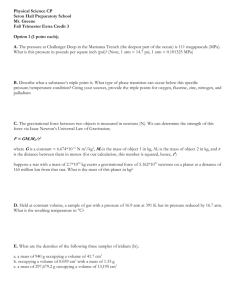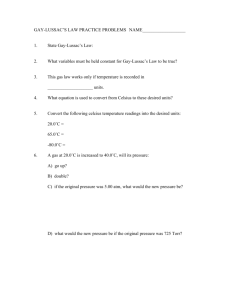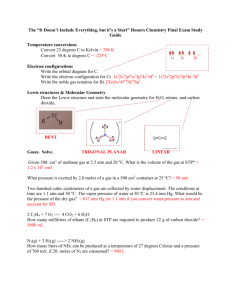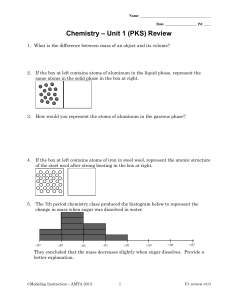Gas Laws Practice Problems: Boyle's, Charles', Gay-Lussac's
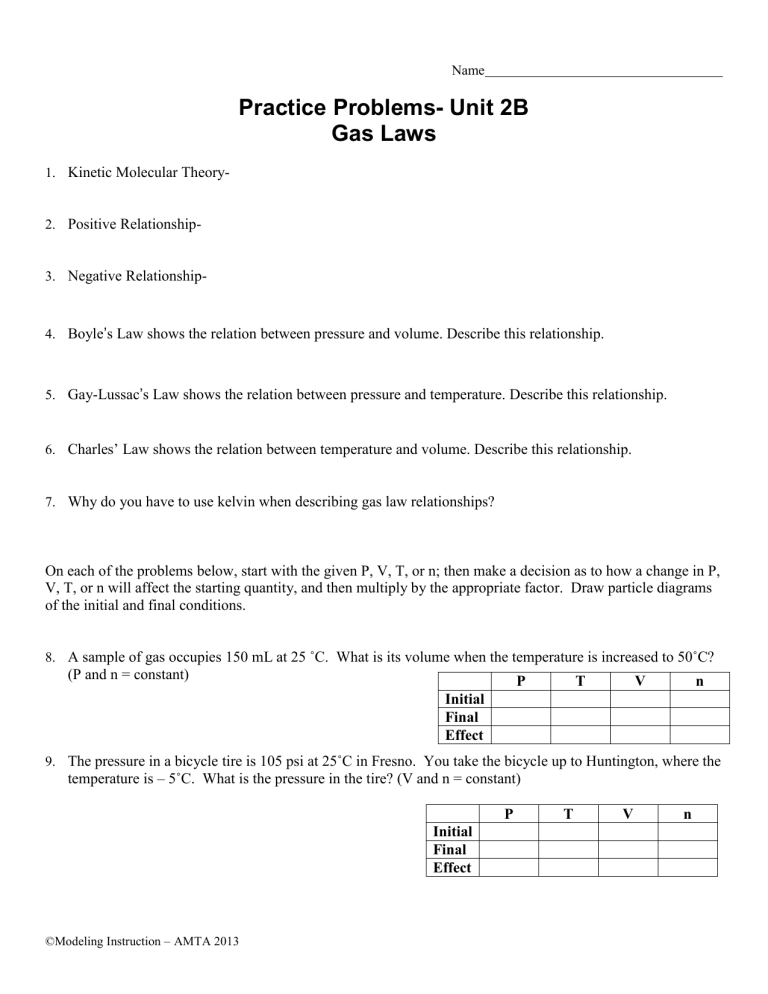
Name
Practice Problems- Unit 2B
Gas Laws
2.
3.
1.
Kinetic Molecular Theory-
Positive Relationship-
4.
5.
Negative Relationship-
Boyle
’ s Law shows the relation between pressure and volume. Describe this relationship.
Gay-Lussac
’ s Law shows the relation between pressure and temperature. Describe this relationship.
Charles’ Law shows the relation between temperature and volume. Describe this relationship.
6.
7.
Why do you have to use kelvin when describing gas law relationships?
9.
On each of the problems below, start with the given P, V, T, or n; then make a decision as to how a change in P,
V, T, or n will affect the starting quantity, and then multiply by the appropriate factor. Draw particle diagrams of the initial and final conditions.
8.
A sample of gas occupies 150 mL at 25 ˚C. What is its volume when the temperature is increased to 50˚C?
(P and n = constant)
P T V n
Initial
Final
Effect
The pressure in a bicycle tire is 105 psi at 25˚C in Fresno. You take the bicycle up to Huntington, where the temperature is – 5˚C. What is the pressure in the tire? (V and n = constant)
P T V n
Initial
Final
Effect
©Modeling Instruction – AMTA 2013
10.
What would be the new pressure if 250 cm3 of gas at standard pressure is compressed to a volume of 150 cm3 ? ( = constant)
Initial
Final
Effect
P T V n
11.
What would be the new volume if 250 cm3 of gas at 25˚C and 730 mm pressure were changed to standard conditions of temperature and pressure? (______= constant)
Initial
P T V n
Final
Effect
12.
The highest pressure ever produced in a laboratory setting was about 2.0 x 10
6
atm. If we have a 1.0 x 10
-5 liter sample of a gas at that pressure, then release the pressure until it is equal to 0.275 atm, what would the new volume of that gas be? (______= constant)
Initial
P T V n
Final
Effect
13.
A 350 mL sample of gas has a temperature of 30˚C and a pressure of 1.20 atm. What temperature would be needed for the same amount of gas to fit into a 250 mL flask at standard pressure? (______= constant)
P T V n
Initial
Final
Effect
14. The diagram below left shows a box containing gas molecules at 25˚C and 1 atm pressure. The piston is free to move.
In the box at right, sketch the arrangement of molecules and the position of the piston at standard temperature and pressure. Does the volume decrease significantly? Why or why not?
©Modeling Instruction – AMTA 2013

